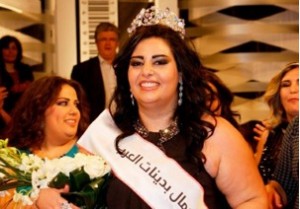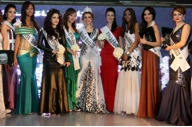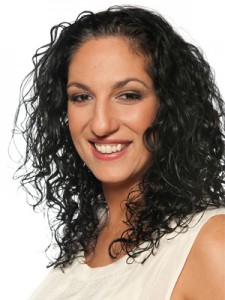When I was a kid, I must confess, I used to love to watch Miss Universe on TV. Despite my mom’s dislike for the show, she would let me watch it (not without swearing at the TV once in a while). Beauty pageants in the 90’s gained popularity in Mexico after Lupita Jones won the title of Miss Universe in 1991. Although previous title-holders were Latin American, Jones was the first Mexican to win such a pageant and her success in the American pageant seemed to me kind of an acknowledgement of the fact that beauty could come from anywhere in the world – as long as it conformed to the beauty standards endorsed by Western industries. Jones, and the most recent Mexican title-holder, Ximena Navarrete, looked nothing like the average Mexican woman (and nothing like most women in the world).

Beauty pageants in all their variety have been broadly criticized for a number of reasons. American feminists in the 60’s saw them as the pinnacle of female objectification. Tibetan critics have recently questioned the principles of “beauty” as defined in these contests. Other critiques have focused on the gender roles that beauty pageants promote, where women are defined by their femininity and domesticity. And race has also been identified as playing an important role in the beauty pageant industry. Pioneer Miss Universe title-holders were white (from Europe and the U.S.), and even when women from other countries started to win early in the 50’s, they were either from white ancestry or where mixed to the point that they were not racially representative of their countries (i.e. Gladys Zender from Peru and Luz Marina Zuluaga from Colombia).
Pageants endorse such an unrealistic idea of beauty that not only are most women excluded from being “the most beautiful woman in the world,” but even those who fit the standards need to be “fixed.” The documentary Beauty Factory explores this in the Venezuelan setting, where contestants undergo “Olympic training” and extensive makeovers before competing in beauty pageants resulting in six Miss Universe titles.
But despite all this, and all the bad things that come along with beauty pageants, they continue to flourish. Today we have kid beauty pageants as depicted in Toddlers in Tiaras (which I personally think should be banned), regional contests such as Miss Arab World, and an increasing number of contests that aim to include women from a variety of ethnic backgrounds and body shapes.

A recent example is found in Al Jazeera’s coverage of the first Arab plus-size pageant. The contest took place in Lebanon and awarded Eliana Neama the title of “Miss Big Arabian Beauty.” Similar to the claims of other beauty pageants, this contest aspired to “give overweight Arabian women a chance to feel more confident about their looks and encourage their self-esteem” according to Al-Arabiyah News.
While it is unclear whether or not any Muslim women participated in this contest, Muslim representatives from all around the world have been present in other pageants, most notoriously Rima Fakih (Miss USA 2010), who Sara wrote about in 2010.
Muslims have come up with their own list of criticisms against the industry, which range from the exposure of women and issues of modesty to the Westernization of the concept of beauty, femininity and perhaps even womanhood. Beauty pageants are so widely spread around the world that many Muslim women compete in Western countries, and countries with Muslim majorities hold their own (for example, Miss Egypt, which was first held in 1929, Miss Bahrain and Miss Indonesia, established in 2005).
Western Muslim women competing in Western beauty pageants are heavily featured in media sources due to their religious background and the clashes that this seems to bring along. For instance, contestant Shanna Bukhari was reported as having received death threats whereas other non-white runner-ups have gotten caught up between what their Muslim communities think of pageants and what others think of their background.

Yet, despite the challenges that Muslim women face within the industry and the critiques that scholars, clerics and feminists bring, beauty contests seem to be here to stay and women around the world will continue to demand pageants that include them, such as in plus-size contests.
Just like Saudi Arabia’s “Miss Congeniality” contest or the Muslimah Beauty Competition, Lebanon’s Plus-Size variation shows that contests may be shaped and tweaked to meet certain social expectations or push some agendas but they are, nonetheless, beauty pageants that define beauty, health, femininity and womanhood.
For many women these contests mean, above all, recognition. And in some instances they also come with monetary goods that can’t be easily ignored.
Although these days I have a conflicted relationship with these pageants and the beauty industry in general, I recognize that many women see in these contests an opportunity to transcend the status quo. Minorities, including Lebanese plus-size women or hijabis, are demanding a space that for some critics would seem unnecessary. On the other hand, some would claim they provide our communities with a sense of “having options” and “access.” If so, what is exactly that we are getting out of these contests? Are Miss Big Arabian Beauty or Miss Congeniality better than Miss Universe? Do they really grant women in our communities options, recognition and access?














